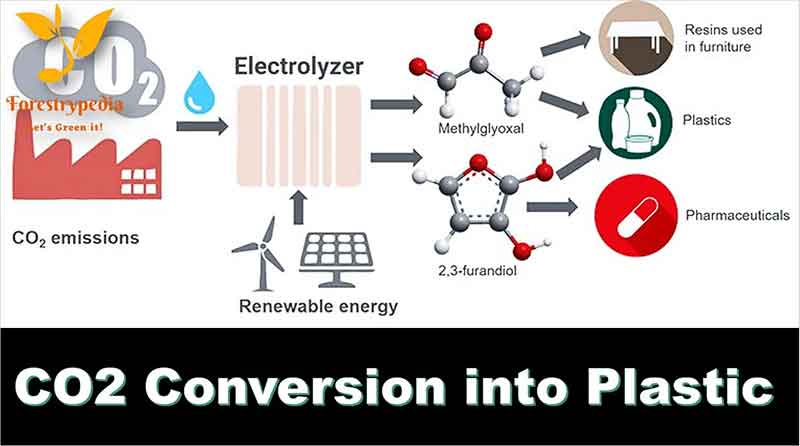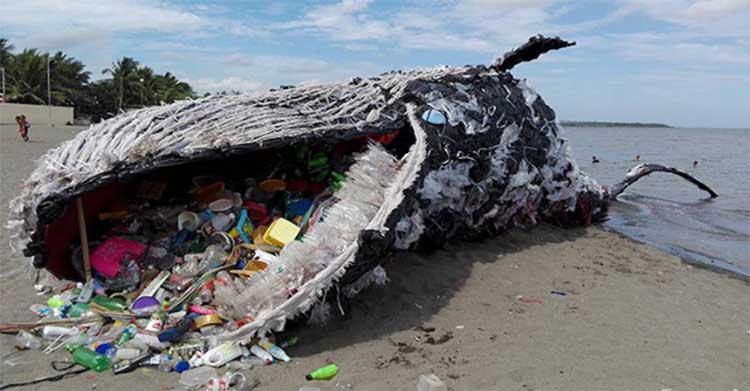We know that plastic is choking the planet. But it could be killing us, too.

In 2019, the European Commission’s Scientific Committee on Health, Environmental and Emerging Risks published a statement that identified 14 emerging health and environmental issues. Right near the top of that list was plastic waste. The committee emphasized the “urgent” need “for a better assessment of hazard and risk” associated with exposure to plastics of different shapes and forms.
The Facts About Plastic
During World War II, U.S. plastic production increased by 300 percent. Since then, plastic has become ever more ubiquitous, and by 2014, according to market research firm PlasticsEurope, had surpassed 300 million tons produced per year. There’s a good reason for that. The wondrous nature of plastic is that it’s lightweight, highly malleable, and resistant to biodegradation. It is widely understood that this last property is the root of what has emerged as one of the most intractable environmental problems as the plastic waste piles up around the globe. What is less understood are the exact reasons why.
Plastic is made up almost entirely of hydrocarbon chains, which are an incredibly stable type of molecular bond. In cases where hydrocarbon chains occur naturally, that stability is a necessary component of an organism’s function and generally forms part of a greater ecosystem. Plastics, however, are synthetic, which means they’re no good as a food source for microorganisms (with at least one rare exception) and, as we’ve so tragically come to learn, that is a major problem.
On one hand, there’s the obvious issue of what happens to all that accumulated plastic trash. We all know the answer to that one: It turns into giant islands of floating trash, it goes up into poor turtles’ nostrils, and is found in the stomachs of beached whales. According to a 2022 study published in the online journal Nature Communications, blue whales could be ingesting as much as 10 million pieces of microplastic every day. According to the World Wide Fund for Nature’s Living Earth 2018 report, 90 percent of the world’s seabirds have plastic in their stomachs, a figure that is expected to rise to 99 percent by 2050.
Marauding Microplastics
Over the course of several decades, as plastic is exposed to the elements, it begins to decompose into smaller particles. While this process, known as photooxidation, does not affect plastic on a molecular level, it does eventually break it down to its nanoparticles. If you’re finding that hard to imagine, picture a grocery bag that’s been zapped by a shrink ray: It’s the exact same piece of plastic, only now it’s microscopic.
On the surface, this result may appear to be a good thing. Out of sight, out of mind, right? If only it were that simple. Plastic may actually be at its most threatening once it has broken down to the point it’s invisible to the naked eye because at that point, those little particles can travel a lot faster and further, and into the bodies of animals, including us.
Research conducted by the State University of New York at Fredonia found a significant amount of microplastics in bottled water. To be precise, 10.4 microplastic particles per one liter of water were recorded in a sample of 259 bottles representing 11 major brands across nine countries, including Aquafina, Dasani, Evian, Nestlé Pure Life and San Pellegrino, reflecting twice the amount of plastic found in a previous study using tap water. Researchers suggested the plastic contamination could have partially come from the bottling process.
Avoiding bottled water and sticking to municipal water won’t necessarily solve the problem of ingesting microplastics from drinking water.
“Substantial amounts of microplastics” were recently found in tap water and rivers throughout South Africa, according to a recent study conducted by scientists from North-West University. Zoologist Henk Bouwman, a member of the research team, explained that the findings were conclusive, but the implications remain unclear. “There is no consensus yet on any health impacts as the science is still in its infancy,” he told Johannesburg’s Daily Maverick. “It might be benign, and it might not be. There are a whole lot of things we don’t understand at this stage.”
This topic was further explored by National Geographic in a 2018 article. For the piece, Chelsea Rochman, an ecologist at the University of Toronto, shared her research that found that fish suffered liver damage from ingesting polythene plastic (the kind plastic bags are made of), while oysters exposed to polystyrene tended to produce fewer eggs and less mobile sperm. But this does not necessarily mean humans will suffer the same effects.
Plastics and Human Health
Given the ubiquitousness of microplastics, it’s no surprise that they have infiltrated our bodies too. A breakthrough study published in 2022, using blood donated by members of the general public, found the tiny particles in 80 percent of the samples. A 2023 UK study found that microplastics can pass through blood vessels to vascular tissue, potentially contributing to damage inside the vein. Other studies have shown that they are present in our feces, our lungs, our stomachs and, most worryingly, in placentas.
It is not yet clear what effect this infiltration has on human health.
As the National Geographic article’s author Elizabeth Royte points out, it’s difficult to study the impact of microplastics on human health for a number of reasons. First, there’s the simple fact that “people can’t be asked to eat plastics for experiments.” Extrapolating the findings from fish experiments doesn’t work either, as “plastics and their additives act differently depending on physical and chemical contexts,” as well as the fact that “their characteristics may change as creatures along the food chain consume, metabolize or excrete them.” As a result, notes Royte, “we know virtually nothing about how food processing or cooking affects the toxicity of plastics in aquatic organisms or what level of contamination might hurt us.”
For Rochman, there is no doubt that “there are effects from plastics on animals at nearly all levels of biological organization.” Studies show that in fish, microplastic pollution (MP) causes structural damage and affects metabolic balance, behavior and fertility. In laboratory mice and rats it causes similar biochemical and structure damage.
OK, so we may not have clear evidence on the direct health impacts of microplastics where human beings are concerned, but what about more immediate side effects?
For one, there’s the fact that microplastics are foreign particles entering our bodies. Inflammation, for instance, is a response triggered by the immune system to this sort of invasion, writes Rachel Adams, a senior lecturer in biomedical science at Cardiff Metropolitan University, in The Conversation. Another cause for concern is that these microparticles act as carriers for other toxins entering the body. Toxic metals like mercury and organic pollutants like pesticides are just two examples of hazardous materials that could enter the body attached to plastic particles. They can slowly accumulate over time in our fatty tissue.
Quantifying Harm
“We do not currently have clear evidence that plastic microparticles in drinking water have a negative effect on health,” writes Adams. “But given the effects other particles can have, we urgently need to find out more about plastic microparticles in the body.”
John Meeker, professor of environmental health sciences and global public health at the University of Michigan, concurs. “We first need to figure out how best to measure exposure then document whether people are being exposed, and, if so, how much,” wrote Meeker over email. In order to do this, he continued, scientists need to determine what environmental factors influence exposure levels and “what aspects of microplastics could be most relevant to toxicity—is it size, shape, chemical makeup or additives used in the plastics, or even toxins picked up by the plastic from its surrounding environment?” Once these factors have been established, we can begin to consider how the body processes these plastics, and what effects the various levels of exposure can have on humans over a period of time.
“Once we have found ways to measure exposure in humans, we will then need to conduct cohort studies in various types of populations to look for associations between exposure and various health endpoints,” said Meeker, advising that “these should be done in concert with experimental laboratory studies on toxicity to establish estimates about health risk.” Some efforts have begun in this direction. For example, in 2022 California became the first state in the USA to adopt a state-wide microplastics strategy. Among other actions, the state requires monitoring of microplastics in drinking water and investigate whether it should set a limit on the particles in this water to protect public health.
For the gamblers out there, this lack of scientific certainty at present might seem like an invitation to continue rolling the plastic dice. The potential hazards of microplastic, however, are far from the only cause for concern.
Bothersome BPA and Problematic Phthalates
Modern living has made it so that there’s no escaping contact with plastic—and the various extra chemicals it contains. Take Bisphenol A (BPA), which gives plastic its shape and structure, and the phthalates that make plastic soft and flexible. We end up ingesting a fair amount of these chemicals when plastic comes into contact with our food or even our skin. In turn, this affects our hormone levels, which is why, for the most part, chemicals such as BPA are heavily regulated. There is a growing body of research showing that exposure to industrial chemicals commonly found in plastics may help contribute to metabolic disorders like obesity and diabetes.
Added to this is the concerning fact that an increasing number of these chemicals are being detected in humans. A recent study conducted by the University of Exeter found traces of BPA in over 80 percent of teenagers. Reporting on the study, The Guardian explained how BPA mimics estrogen, and in so doing disrupts the endocrine system, which is responsible for regulating metabolism, growth, sexual function and sleep. But as is the case with microplastics, it is difficult to draw conclusive causal links between BPA and these health impacts due to ethical concerns around testing on humans.
Despite this lack of certainty, there’s enough cause for concern that governments have responded to this plastic plight. Legislation has been passed in Australia, Canada, the European Union and the United States restricting or prohibiting the use of phthalates in certain consumer products. According to a paper published by the Indian Journal of Occupational and Environmental Medicine, these moves respond to the “variety of adverse outcomes” caused by the chemical, “including increased adiposity and insulin resistance” as well as “decreased levels of sex hormones, and other consequences for the human reproductive system.”
While it’s important to understand the health impact of plastic, perhaps a more pressing question is what happens when we tell ourselves that plastic is safe—and continue to produce it in ever greater quantities. According to Statista, a market research firm, global plastic production has grown from 50 to 335 million metric tons over the past four decades. Chances are likely that the ultimate consequence of our plastic consumption will be something far greater, and perhaps direr, than our current scientific understanding is able to predict.
Robin Scher is a contributor to the Observatory and freelance writer based in Johannesburg, South Africa. Follow him on Twitter: @RobScherHimself
This article was produced by Earth | Food | Life, a project of the Independent Media Institute, and originally published by Truthout.
















































